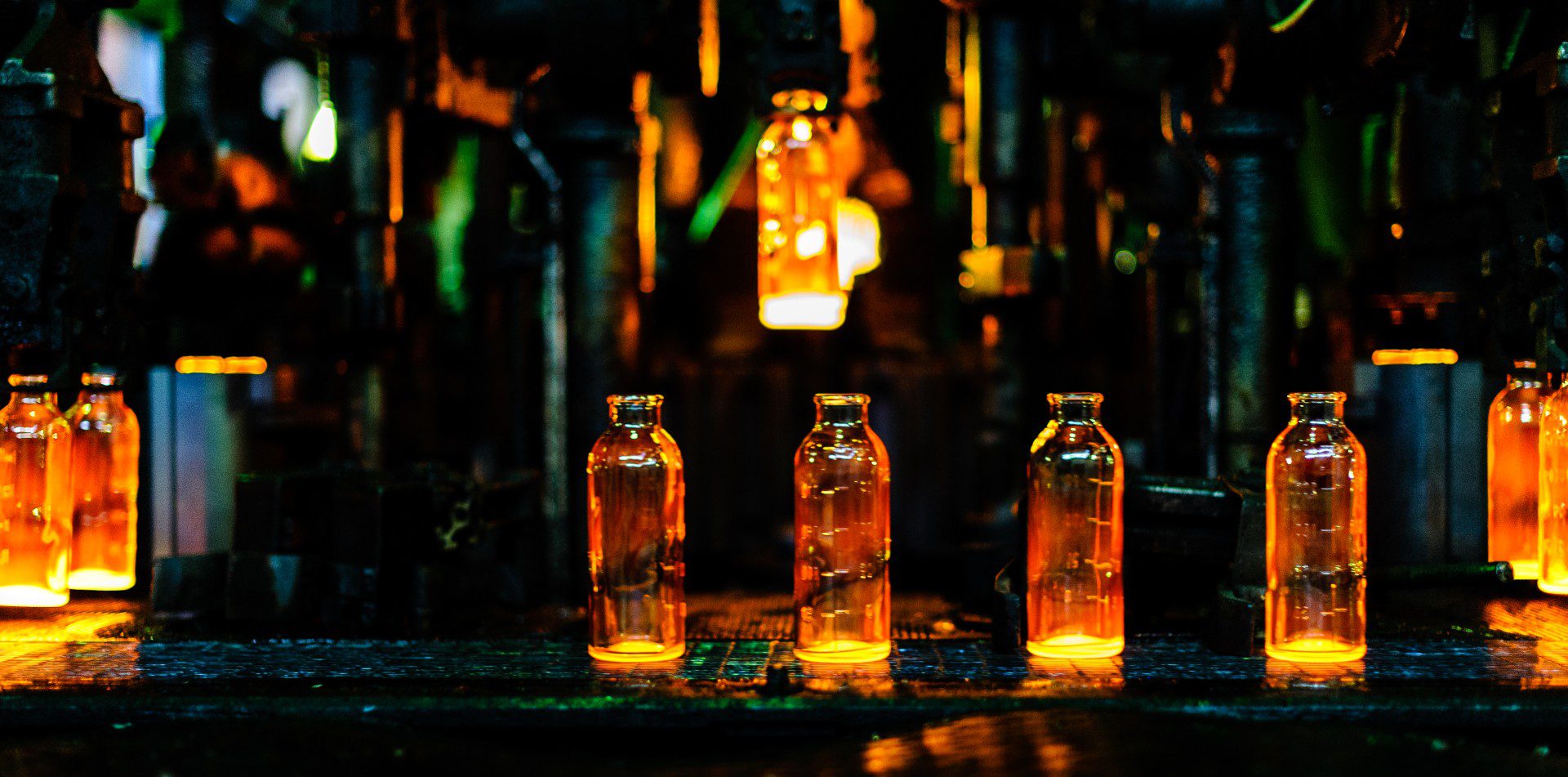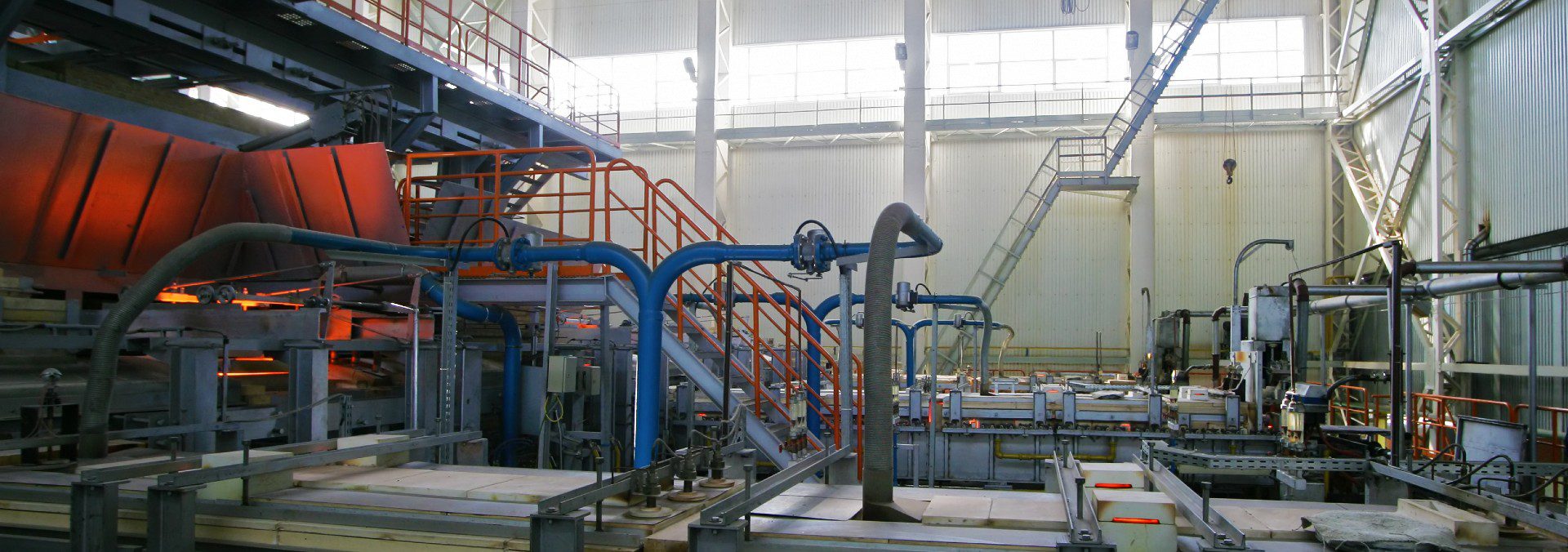Glass has been an essential material in our day-to-day lives for thousands of years. Just think of all the items made of glass that we utilize each day: windows, computer screens, optical glass, mirrors, cookware, and more.
Over the years, glass manufacturing has adapted, and the industry has made efficient improvements to glass furnaces. Understanding industrial burners is essential when considering the best options for glass furnaces. Let’s take a look at regenerative glass furnaces, why Eclipse burners are necessary, and a few of the most sought-after Eclipse burners on the market.
What Are Regenerative Glass Furnaces?
Almost all modern glass products are produced in a furnace. Glass needs to be fired and melted in a furnace and molded at very high temperatures between 1400 and 1600 degrees Celcius or 2552 to 2912 degrees Fahrenheit.
Since glass furnaces require a great deal of energy to reach such high temperatures, furnaces have been designed to conserve energy and minimize heat loss. Regenerative glass furnaces are one kind of glass furnace that aims to do just that.
Regenerative glass furnaces have two chambers which each contain refractory material called “checkers.” Checkers are refractory bricks that have a high resistance to thermal shock and a high specific heat capacity. They operate as a thermal energy store. All regenerative glass furnaces feature similar components, such as:
- Checkers (refractory bricks)
- Melters
- Refiners
- Combustion air blowers
- Burners
- Ports
The direction of gas flow in regenerative furnaces is periodically reversed from one chamber to the other every 15 to 20 minutes to allow combustion gas to use the thermal heat in the checkers. Because of this, all regenerative furnaces have an even number of regeneration chambers so that heat regeneration can occur in both directions. This process enables the furnace to recover lost heat and operate efficiently.
While regenerative glass furnaces are typically the most common choice for industry tradespeople, there are also other types of glass furnaces, including:
Recuperative Glass Furnaces
Typically, the heat transfer efficiency of recuperative furnaces is lower than regenerative furnaces. However, this type of furnace takes a different approach to reclaim waste heat. During the recuperative process, the chimney and gas inlets are paired with a radiative heat exchanger.
The heat exchanger allows for the continuous heat transfer from exhaust gas to combustion gas without a need for the gas flow reversal in regenerative furnaces.
Oxygen-Fuelled Glass Furnaces
Oxygen-fuelled glass furnaces are a new solution in the glass firing industry. These furnaces work by replacing the air entering the furnace with oxygen so that the total amount of gas entering the chamber can be reduced without affecting the performance.
Since oxygen has no adverse effect on the environment, dangerous emissions from molten glass are reduced. Generally, oxygen-fuelled glass furnaces utilize the same basic design as recuperative furnaces.
All-Electric Glass Furnaces
While the above conventional glass furnaces generally operate similarly, all-electric glass furnaces work differently. All-electric furnaces avoid gas combustion entirely and apply heat energy to glass mixtures through high-voltage electrodes instead. These furnaces are generally used for firing specialty glasses and fiberglass.
The Story Behind Nitrogen Oxide
In 1990, Congress made amendments to the Clean Air Act, which stated that stationary sources that emit 25 tons of nitrogen oxides (NOx) per year must find alternative controls. Glass melting furnaces fit directly into this category, so changes needed to be made.
Regulatory programs were implemented to control NOx emissions from glass furnaces, and new burner designs and high burner turndown ratios in regenerative furnaces were a critical component. During trials, single-hole gas burners were found to produce high NOx levels, while multi-hole burners had much lower NOx levels.
Eventually, throughout the trial and error of creating new burner designs to reduce NOx emissions, burners from the manufacturer Eclipse demonstrated NOx reductions on all regenerative glass furnace ports.

Why Eclipse Burners Are the Best Choice
Honeywell Eclipse combustion burners for regenerative glass furnaces are the top choice in the glass manufacturing industry. Eclipse burners are the industry standard across the United States and worldwide as they significantly reduce NOx emissions by gas-fired glass furnaces. In addition to the burners themselves, Honeywell burner valves help the environment by conserving energy in every possible situation.
Honeywell Eclipse is a worldwide manufacturer of industrial burners, and in addition to glass and furnace burners, Eclipse produces:
- Air heating burners
- Immersion burners
- Oxygen-fuel burners
- Heat exchangers
- Safety shutoff valves
- Control panels for combustion processes
- And more
Lindberg Process Equipment offers an extensive list of Eclipse products. To help you choose the proper eclipse burner for your regenerative glass furnace, consider some of the following sought-after choices:
RatioMatic Burner
RatioMatic burners are often considered the world’s most reliable air-heating burner. The design is safe, easy to use, and doesn’t require any guesswork. The RatioMatic burner gets its name from the ratio regulator that automatically compensates for changes in operating conditions without needing additional gas adjustments.
Perks of the RatioMatic burner:
- No guesswork in start-up or adjustments
- Ratio regulator automatically adjusts to changes in operating conditions
- Direct-drive air butterfly eliminates slips and jams during operation
- The nozzle provides a clean, stable flame
- Releases heat into the chamber, not the oven wall
- Low NOx, carbon monoxide (CO), and aldehydes
Winnox Burners
Low NOx Winnox burners comply with all global emissions mandates. Low emissions are achieved through the burner nozzle producing an intense mixture of air and fuel. Simply put, Winnox burners feature advanced engineering techniques that set them apart as environmentally friendly, user-safe burners.
Features of Winnox burners:
- Capacity for natural gas, propane, and butane
- Provided with blowers for ease of installation
- Intense, short, swirled flame contained within the firing tube
- Air and gas regulation for maximum efficiency
- Multiple configurations available
Linnox ULE Burners
For ultra-low emissions and uniform heat, consider Linnox ULE burners. Linnox ULE is one of the industry-standard burners for regenerative glass furnaces because of benefits such as:
- Reliable heat distribution and temperature uniformity
- Leading burner for ultra-low NOx emissions
- Simple, robust controls
- Design supports a wide range of inputs
Choose Eclipse for Reliable and Environmentally-Friendly Burners
There’s no denying that regenerative glass furnaces require a lot of energy to melt glass. In order to keep NOx levels low, Eclipse burners are a must-have component for every glass furnace. Glassmakers around the globe have trusted Honeywell Eclipse burners for decades.
Which Eclipse burner is suitable for your furnace? If you’re ready to upgrade to a better burner or replace an existing one, contact Lindberg Process Equipment today. We provide a massive selection of Honeywell Eclipse products.





